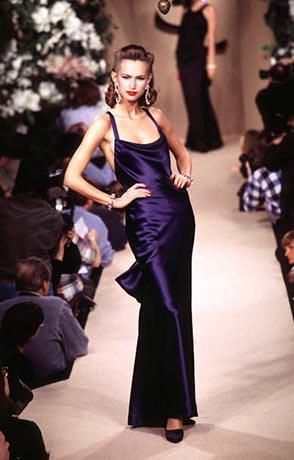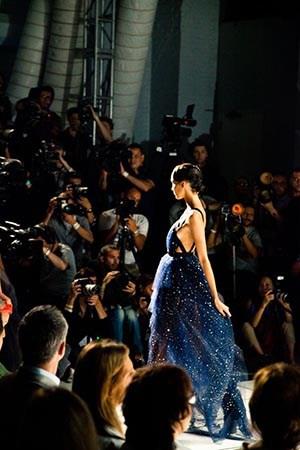Runway shows are a core part of the fashion world. They are, if we can make a comparison, like the locomotive of a train, pulling everything that comes next. The runway shows are the forefront of the fashion calendar, followed by campaigns, films and store adaptations of the presented clothes.
While it may seem that fashion shows have always been the same, they did change a lot, as the way society changed imposed changes on runway shows too.
When fashion shows began, they were more of a "showing" than a "show", meaning that they were small gatherings where clothes were showcased, pretty much the same way as appliances were showcased by salesmen.
By the 1970s, fashion shows had become more creative and fashion houses were putting together presentations that were rather conceptual in nature and which started being worthy of the title of "shows".
The 1980s were a colorful time in fashion and started to transform fashion into something that was more mainstream than before. Fashion shows were now dedicated to professionals and everyone who was interested in owning, wearing or just seeing exceptional garments. It was the 80s when the big supermodels of the world took the stage and changed the face of fashion.

This context was an expression of how life was in the West in the 1990s: the models were the unattainable divas that came in contact with the public who liked them and the clothes they wore. Men were drooling over the models who walked like goddesses of fashion and women admired their confidence and the clothes that gave them this confidence. It was an interaction between people of different types and that was what the runway shows of the 90s special.

Of course, this restrained aspect makes the shows more important; it puts designs in an art light and makes the experience more structured and seamless. What's great about them is that they are very clear and one can focus on the clothes and not necessarily on the contextual aspect. In a way, fashion shows used to be a lot about the audience, it was about the interaction about the clothes, the models and the audience, but after 2010 they are all about the clothes, which can be regarded as a good thing.
As the fashion world diversifies, we are expecting to see different types of fashion shows emerging in the future. Maybe a new generation of supermodels will arise, maybe some underground, niche models will reshape the way fashion is lived and presented. Designers are always trying to move things and shift them, so the possibility of a renewal of fashion shows is definitely in sight.
Fraquoh and Franchomme
Further reading:
Do people buy clothes off the runway? 9 must-see fashion documentaries Hopes for fashion The 6 goddesses of modeling you should know 10 male models you should knowP.S. We want to hear from you! Which type of runway show do you like best? Why? How would you like to see fashion shows change? Share your feedback, questions or thoughts in the comments below! For more articles on style, fashion tips and cultural insights, you can subscribe to Attire Club via e-mail or follow us on Facebook, Twitter or Instagram!

